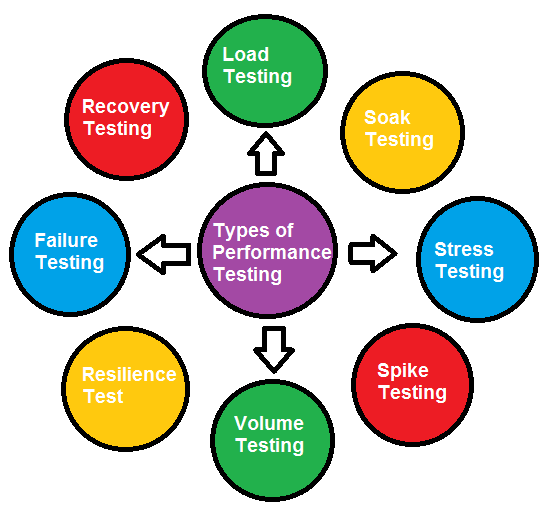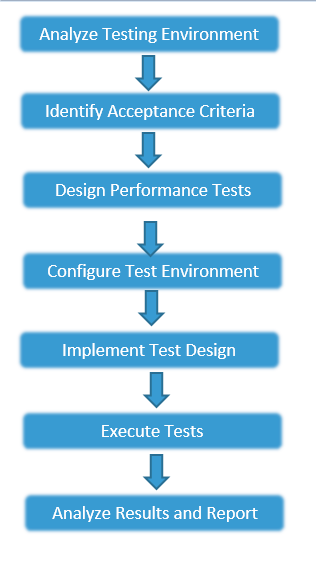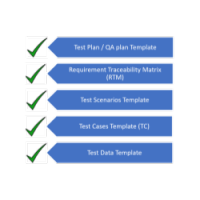What is Performance Testing? Understand its Types, Tools and Skills required and Career growth
Recently everyone is talking about Performance Testing and recently you might have seen the rise in requirements specifically for Performance Testers on job portals. MNCs are on a hiring spree of Performance Testers, making Performance Testing in massive demand. This being a special skill, companies are also paying more than manual testers to them.
Also, Performance Testing tools are comparatively way easy to learn than Functional testing tools. So, if you are a fresher or experienced one in manual testing and looking for a job change, try your hands on Performance Testing. This will certainly increase your chances of a good future.
In this article, you will learn everything about Performance Testing like what is Performance Testing?, Why its important, Types of Performance Testing, different Tools used for it. Also, Career growth In Performance Testing and some MNCs looking for Performance Testers.
This will surely help you to answer some important but frequently asked questions in an interview.
What is Software Performance Testing?
Performance testing is a non-functional software testing that focuses on system performance under a particular load. Software performance testing measures according to some special parameters.. It’s not just simple testing in which we find bugs and error. With proper performance testing, we can achieve 3 main things: speed, scalability, and stability of the system.
Speed: – It determines whether an application responds in time or not.
Scalability: – A scalable software gives a good performance in any situation.
Stability: – Determines how consistent and stable the software is.
The primary goal of performance testing is to establish the benchmark behavior of the system. There are many pre-defined benchmarks that must be met during performance testing.
Performance testing does not aim to find defects in the existing application and does not pass or fail the test. Rather, it creates the critical task of setting the benchmark and standard for an application. Performance testing must be done very accurately. Proper monitoring of system performance is the main characteristic of performance testing.
Need for Software Performance Testing / why it is important?
Here are some reasons that indicate why the software performance testing is essential.
- When you do the load testing on your software it will check, how the application will perform when thousands of users visit it simultaneously.
- With testing, you can identify and solve the bugs.
- It is also important to check your application on different KPIs like load time, response time, memory uses etc. Because many times, application crashes if not completed the testing process.
- Load Management checks whether software or hardware needs any improvement before go live.
Types of Software Performance Testing with examples?
To check how the system performs on a user’s computer, there are different types of software performance tests available, through which we can easily verify the performance.
In performance testing, we conduct different types of tests on a system. The type of test depends upon which type of performance you want to check with a system.
There are various types of software performance testing, let’s talk about it in details.
- Load Test: – Load testing is used to study the behavior of an application. It is performed to validate the performance characteristics of a system when the workload increases. The system monitors the response time when the workload increases to find out whether the workload is falling in the normal working condition or not. It is usually conducted initially during the performance testing cycle.
- Stress test: – Also known as fatigue testing. It is usually performed to check the maximum limit of a software. In other words, it checks the software performance when the current load exceeds the threshold level. Usually, this test is performed when a system is running fine but needs to expand for future growth.
- Soak Testing: – It is also known as Endurance testing. The main goal to perform this task is to check some internal problem like a memory leak or memory utilization. It also calculates how the software performed with the same workload for an extended time. It is generally conducted at last during the software performance life cycle.
- Spike Test: – It is also a type of stress testing. It calculates the software performance when workload is increased suddenly. This test checks whether a given application is capable to sustain the workload when the workload increased quickly and rapidly.
- Volume Test: – It is also known as a flood test. It checks the efficiency of software when it works with a large number of data at a time. In this test, we flood the system with a number of data.
- Resilience Test: – It checks whether the system is capable enough to set on the initial state when it is in a stressful state.
- Failure Test: – It is executed to check how one module performs if another dependent module is not available.
- Recovery test: – This test checks if the application is capable to recover itself when the load is decreased to a normal level.
Process of Software Performance Testing:
Now it’s time to perform the task. A software performance testing method usually completes in 7 steps. These steps are also called as Performance Testing Process.
- Analyze Testing Environment: – At first, do proper study and research on the testing goal and objective. Check the hardware, software and network configuration before the testing. Solve the environment-related concern and check what types of tools are required during the testing life cycle.
- Identify performance acceptance criteria: – Identify the response time and throughput. Response time is a user concern and throughput is a business concern. It is necessary to check the applicable acceptance criteria.
- Design performance tests: – Identify the performance test scenarios. Determine the variability of various users.
- Configuring the test environment: – Make a list of each and every tool that is required for testing and prepare the necessary resources to execute each strategy.
- Implement test design: – Create performance test as per your test design.
- Execute the test: – Execute your test and monitor the performance of the software. Compare and validate the test data and results.
- Analyze Results, Report and Reset: – Analyze the outcome and share test results.
Some most common problems, when we perform testing:
During Performance Testing, a quality analyst generally looks for the issues like speed issue, slow responses, high load time etc. but there are some other performance problems which may occur during the test.
- Bottlenecking: – It occurs when data flow is interrupted because the capacity of software to handle the workload is slow down.
- Poor scalability: – If the software can’t handle the number of concurrent tasks, the chances of error will be increasing so the result generating process will slow down.
- Configuration issue: – It may occur when the configuration of software does not set to a sufficient level to handle the workload.
- Hardware issue: – When you are using a low-performance CPU that is not capable to handle the task.
- Memory Leaks
- Poor Network configuration
- Operating system limitation.
- Poor CPU uses.
Tools used for Software Performance Testing:
Now you know all the important information about software performance testing. To complete this task there are many tools that are available online. Here are some top performance testing tools, which gives the best result.
- StresStimulus
- LoadUI Pro
- NeoLoad
- LoadRunner
- Apache Jmeter
- Load View
- Silk Performer
- WebLOAD
- AppLoader
- Smartmeter.io
- Rational Performance Tester (RPT) by IBM
Here is a simple demonstration for manual testers, on how to test web applications using RPT.
Testing Web application with RPT -Part 1
Testing Web Application with RPT – Part2
Basic Performance Parameter: –
It is essential to know, on which parameter we check the performance of any software. Let’s find out some of these.
- Memory Use
- Processor Use.
- Committed memory.
- CPU interrupts per second
- Network output queue length.
- Throughput
- Rollback segment.
- Thread count.
- Garbage collection.
- Hit ratio.
- Response time
- Load time.
- Page Faults.
- Disk time
- Maximum active session
Career growth in Software Performance Testing:
Software Performance Testing is a huge field. It is also a secure domain because without testing no company can launch an application in the real world.
As a tester or a quality analyst, you have to perform various types of tests to measure the performance unit test, UI test and many more. Hence this field also needs a good amount of experience. Any company which hires a software performance tester wants at least some knowledge of scripting. To be a software performance tester, knowledge of any testing tools and basic knowledge of databases is an added advantage. But this is not compulsory.
Apart from this, good communication skills, analytical skills, and management skills are also desired to make a difference.
Companies looking for Software Performance Testing
It’s really a challenge to determine the performance aspect of any system. When it comes to finding out how the system behaves under certain workloads and performance criteria, software Performance Testing is the only solution. So many software companies are looking for good software performance testers. Companies like Accenture, IBM, Barclays, Cognizant, Infosys, Capgemeni are looking for Performance Testers for their clients from all domains. And these MNCs really pay well for them. Even those MNCs often encourage their manual testers in the team to learn Performance Testing and Tools.
Conclusion
The success of any software depends on its performance. System Performance Testing plays a key role in software testing life cycle. It enhances customer satisfaction and lowers down the risk of failure. So it is important to carry out through Performance Testing before you go live to the digital world. Nowadays, so many companies need Performance Testers, as an area of Performance Testing is not only limited to a game zone. All the mobile applications, Websites or Softwares which are developed for thousands of users, need Performance Testing done.
So we will suggest, surely give it a try and upgrade yourself in a career.
If you have any queries or opinions related to Performance Testing, please feel free to share.




